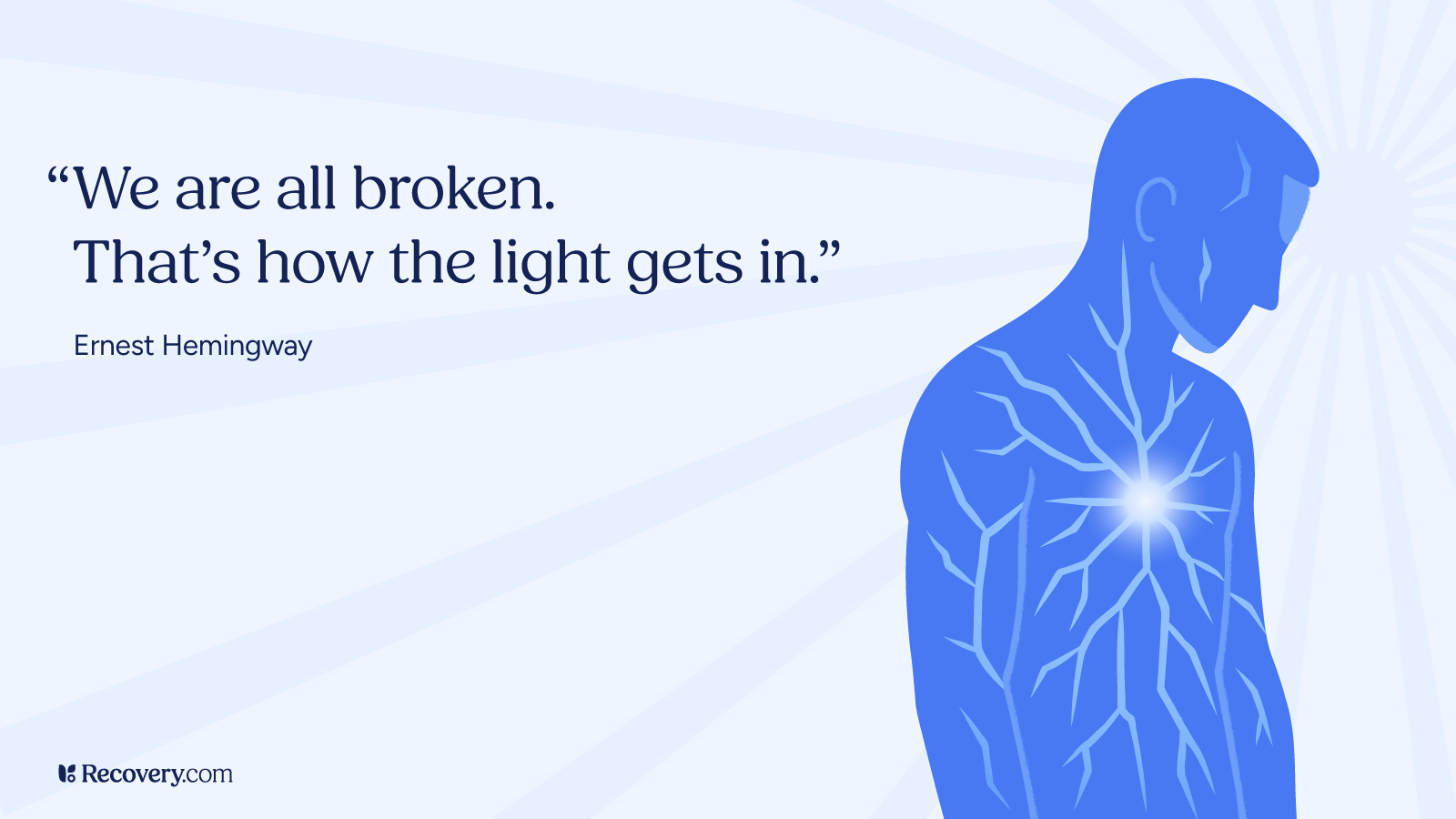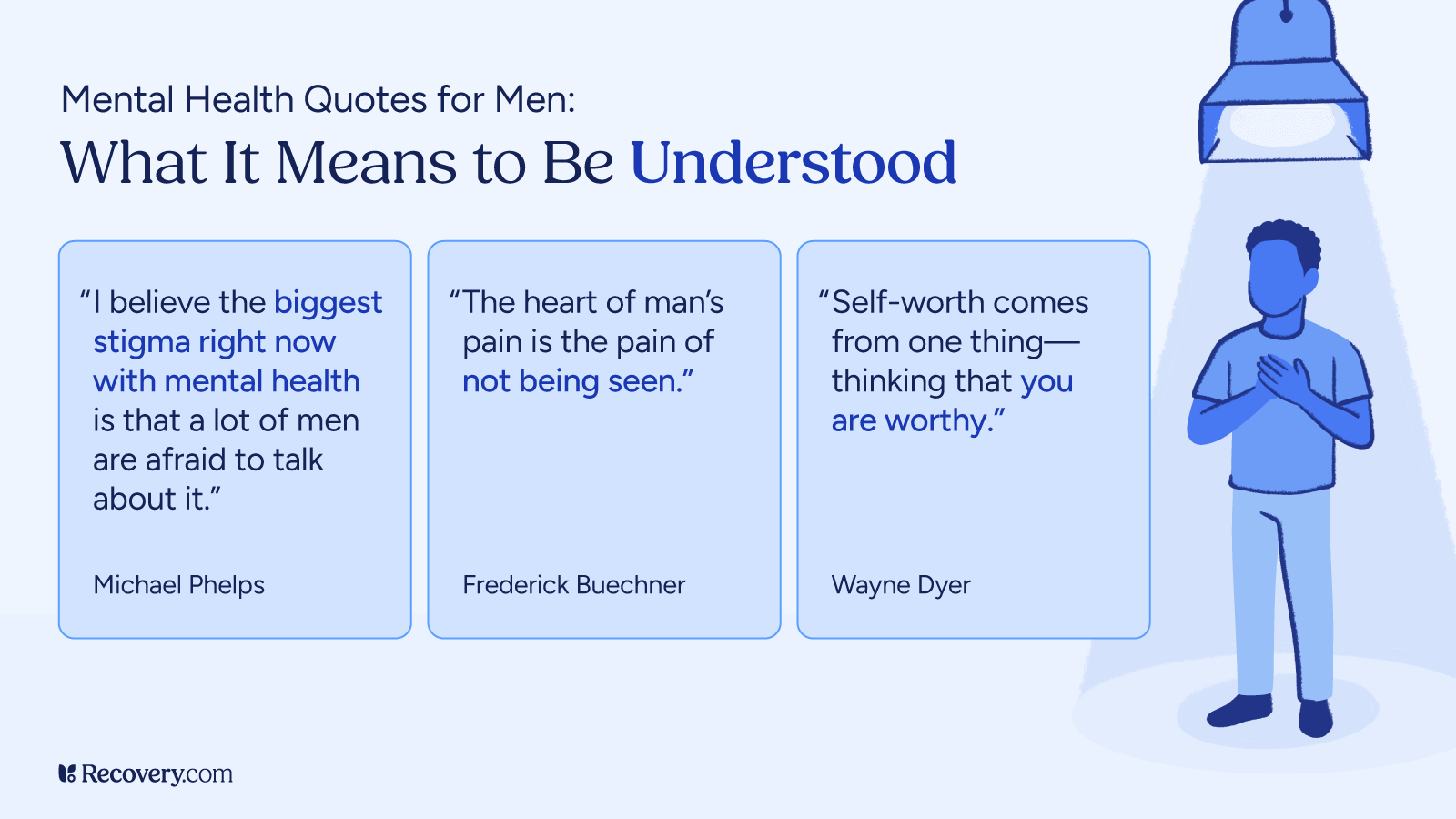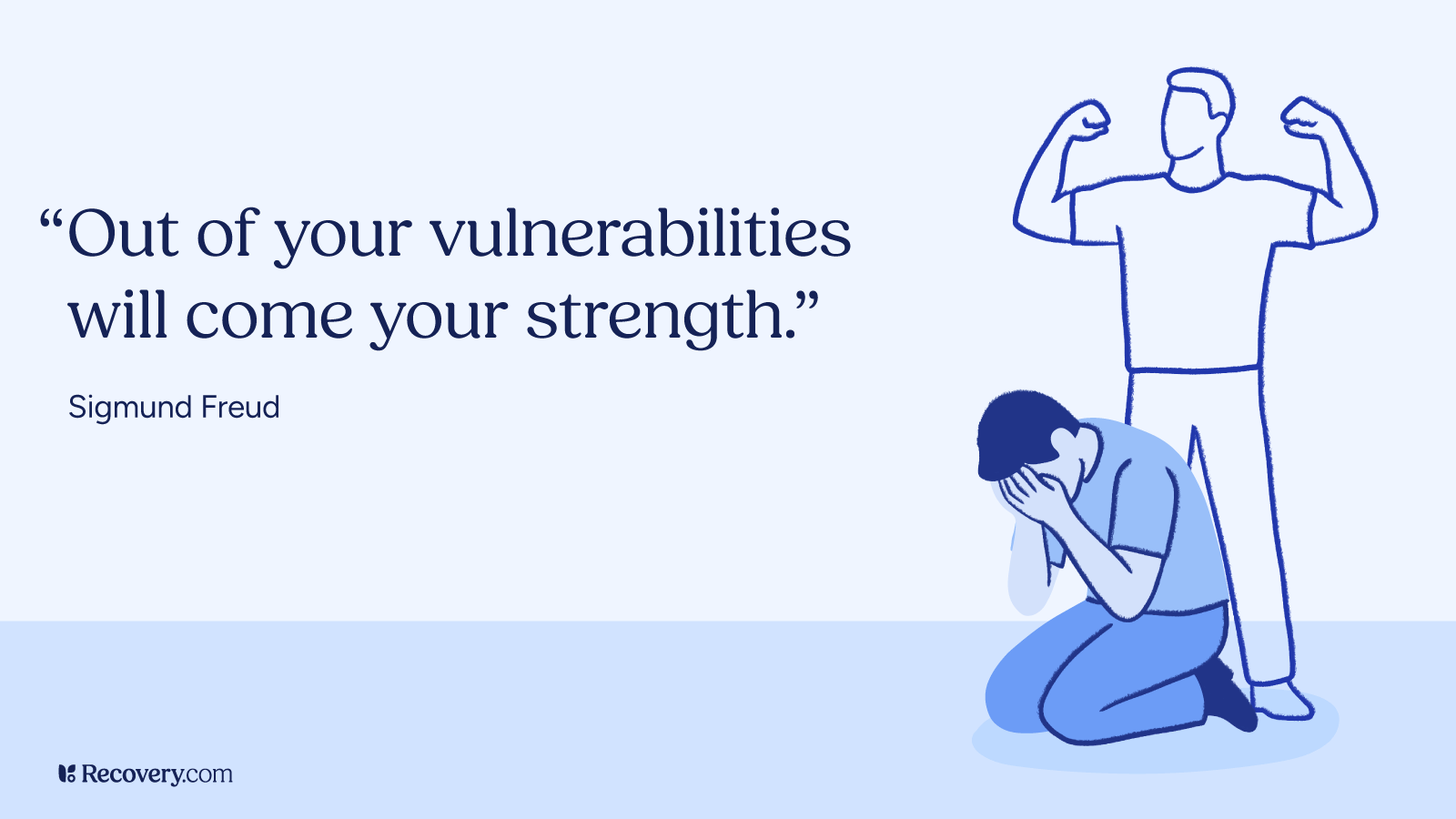June is Men’s Mental Health Awareness Month, a time to uplift and validate the emotional lives of men. These 25 mental health quotes spotlight the power of vulnerability, healing, and self-love while also highlighting important mental health challenges that many men face.
As a therapist who works primarily with men, I’ve learned this: most guys aren’t taught how to name what they feel, so instead they manage it quietly. Their mental well-being suffers from it. These quotes aren’t just feel-good messages. They’re reminders from real men with real stories that your mental health matters and it being honest about it doesn’t make you soft— it makes you strong.

25 Quotes to Inspire and Live By
These quotes are reminders that mental health struggles don’t define you and recovery is possible.
Here’s a revised list of 25 inspirational quotes for Men’s Mental Health Awareness Month1—featuring only quotes by men.
These voices range from artists and athletes to philosophers and advocates, offering encouragement for mental well-being, vulnerability, and resilience.

25 Quotes to Inspire and Live By (By Men, For Men)
- “There is hope, even when your brain tells you there isn’t.” – John Green
- “You’re only given a little spark of madness. You mustn’t lose it.” – Robin Williams
- “Being vulnerable is not a weakness—it’s a strength.” – Dwayne “The Rock” Johnson
- “Don’t give in to stigma. A diagnosis does not determine who you are or what you can do.” – Pete Wentz
- “The heart of man’s pain is the pain of not being seen.” – Frederick Buechner
- “Mental health is just as important as physical health. You have to nurture your inner world the same way.” – Lewis Hamilton
- “I believe the biggest stigma right now with mental health is that a lot of men are afraid to talk about it.” – Michael Phelps
- “You don’t control the situation, but you control what you think about it and how you respond.” – Ryan Holiday
- “We are all broken. That’s how the light gets in.” – Ernest Hemingway
- “It’s okay not to be okay.” – Prince Harry
- “Out of your vulnerabilities will come your strength.” – Sigmund Freud
- “The times in my life when I’ve been happiest are when I’ve let myself be the most vulnerable.” – Chris Evans
- “It is not death that a man should fear, but never beginning to live.” – Marcus Aurelius
- “My dark days made me stronger. Or maybe I already was strong, and they made me prove it.” – Emery Lord
- “I am seeking. I am striving. I am in it with all my heart.” – Vincent van Gogh
- “Success is not final, failure is not fatal: it is the courage to continue that counts.” – Winston Churchill
- “You cannot swim for new horizons until you have courage to lose sight of the shore.” – William Faulkner
- “Life is not easy. Life is not fair. But life is beautiful if you choose to see it that way.” – Steve Gleason
- “Self-worth comes from one thing—thinking that you are worthy.” – Wayne Dyer
- “Our greatest glory is not in never falling, but in rising every time we fall.” – Confucius
- “Everyone is going through something that we can’t see.” – Kevin Love
- “When we are no longer able to change a situation, we are challenged to change ourselves.” – Viktor Frankl
- “He who conquers himself is the mightiest warrior.” – Confucius
- “There is no education like adversity.” – Benjamin Disraeli
- “Try not to become a man of success, but rather try to become a man of value.” – Albert Einstein

Men’s Mental Health Treatment
Men often experience unique mental health struggles2 that can make asking for help feel overwhelming. But with the right support, healing is possible.
Men are often taught to manage quietly, power through, or downplay their struggles altogether. I see it all the time in the therapy office. Clients who’ve spent years in high-functioning survival mode without realizing how lonely or exhausted they’ve become. The truth is, asking for help is often the most courageous step in a man’s healing journey.3
Men-Only Rehab
Men-only treatment centers offer a safe space to explore personal trauma, mental health challenges, and substance use in a nonjudgmental setting. They provide a gender-responsive approach to care, helping men reconnect with their emotional well-being without societal pressure to appear “tough” and surrounded by other men who truly get it.
Burnout and Stress
Burnout can look like overcommitment, irritability, numbness, or quietly feeling like you’re failing at everything. Plenty of men say things like, “I’m just tired,” but what they may mean is, “I feel like I’m not allowed to stop.” Chronic stress can impact both mental and physical health, leading to anxiety, depression, or even substance misuse. Men’s programs address these mental health conditions with evidence-based therapies focused on stress management and emotional regulation.
Loneliness
Men are lonely. I share this in a recent article in my weekly newsletter, More to the Story:4
There is a crucial difference between being alone and being lonely. Loneliness is an emotion that, like all others, tries to communicate something to us. It is neither inherently good nor bad; instead, it indicates that we lack connection and intimacy—two fundamental human needs. When someone asks, “How are you doing?” and you respond with, “Oh, I’m good!” but the truth is that you are not good at that moment, you will inevitably feel lonely. This discomfort arises from a lack of genuine connection and intimacy.
Loneliness isn’t a flaw or failure—it’s a signal. For many men, it can feel shameful or weak to admit feeling isolated, but the truth is that loneliness may be pointing you toward the connection and support your mind and body deeply need. If that’s hard to believe—if your lived experience tells you that connection isn’t safe or possible—you’re not alone in that, either. That pain is real, and it deserves compassion.
Dual Diagnosis
Many men experience co-occurring mental health and substance use disorders. Dual diagnosis treatment tackles both issues at the same time, recognizing how depression, PTSD, or bipolar disorder may be driving unhealthy behaviors.
Eating Disorders
Although often overlooked, eating disorders like binge eating and body dysmorphia affect men, too. These conditions can be tied to trauma, shame, and perfectionism. When we trace it back, and unhealthy relationship with food can often be rooted in unprocessed grief, body-based trauma, or a desperate attempt to feel in control. Specialized care is critical to promoting long-term wellness and better mental health.
Explore Men’s Treatment Centers
Not all treatment centers are created equal. When searching for support, it’s important to look for men’s programs that are trauma-informed, personalized, and led by licensed mental health professionals. From support groups to inpatient rehab, men have options for addressing their mental health needs.
FAQs
Q: What are some inspiring quotes to support men’s mental health?
A: Inspiring quotes like “It’s not weak to speak” or “Real strength is asking for help” remind men that vulnerability is a part of courage, not a contradiction to it. These messages help normalize emotional expression and support seeking help.
Q: Can quotes about mental health help men open up about their struggles?
A: Yes, quotes can be powerful conversation starters. They provide language for feelings that may be hard to express and let men know they’re not alone in their experiences.
Q: What to say to a man struggling with mental health?
A: Offer validation and support: “You don’t have to go through this alone—I’m here for you,” or “It’s okay to not be okay, and it’s okay to ask for help.”
Q: Why is men’s mental health overlooked?
A: Cultural expectations and stigma around masculinity often discourage men from expressing emotions or seeking help, leading to underdiagnosed and untreated mental health issues.
Q: Are men less prone to mental illnesses than women?
A: No. While women are more likely to be diagnosed with certain conditions like depression or anxiety, men often experience mental health issues differently—and may be less likely to seek help, which can increase the risk of substance use or suicide.








